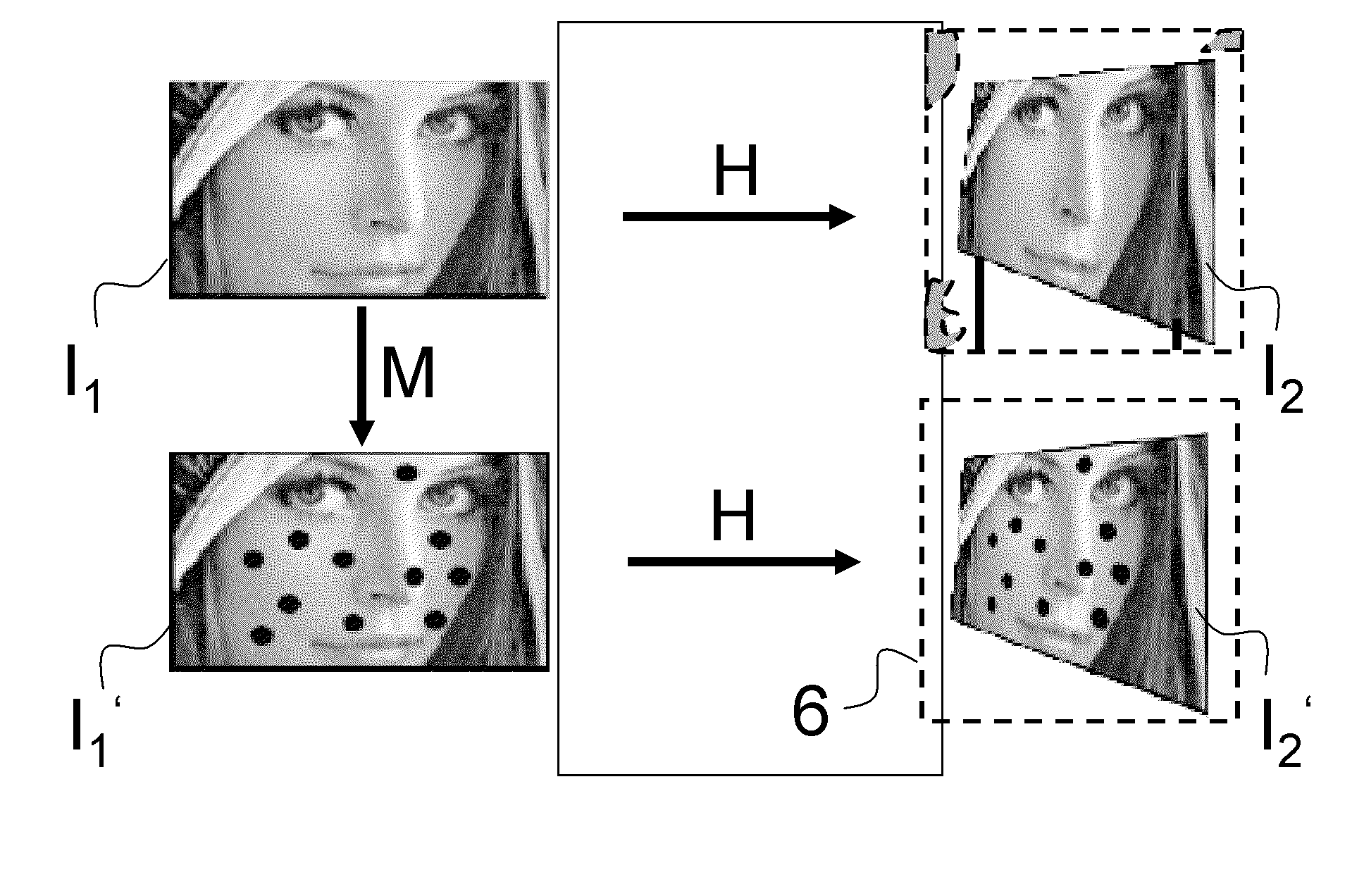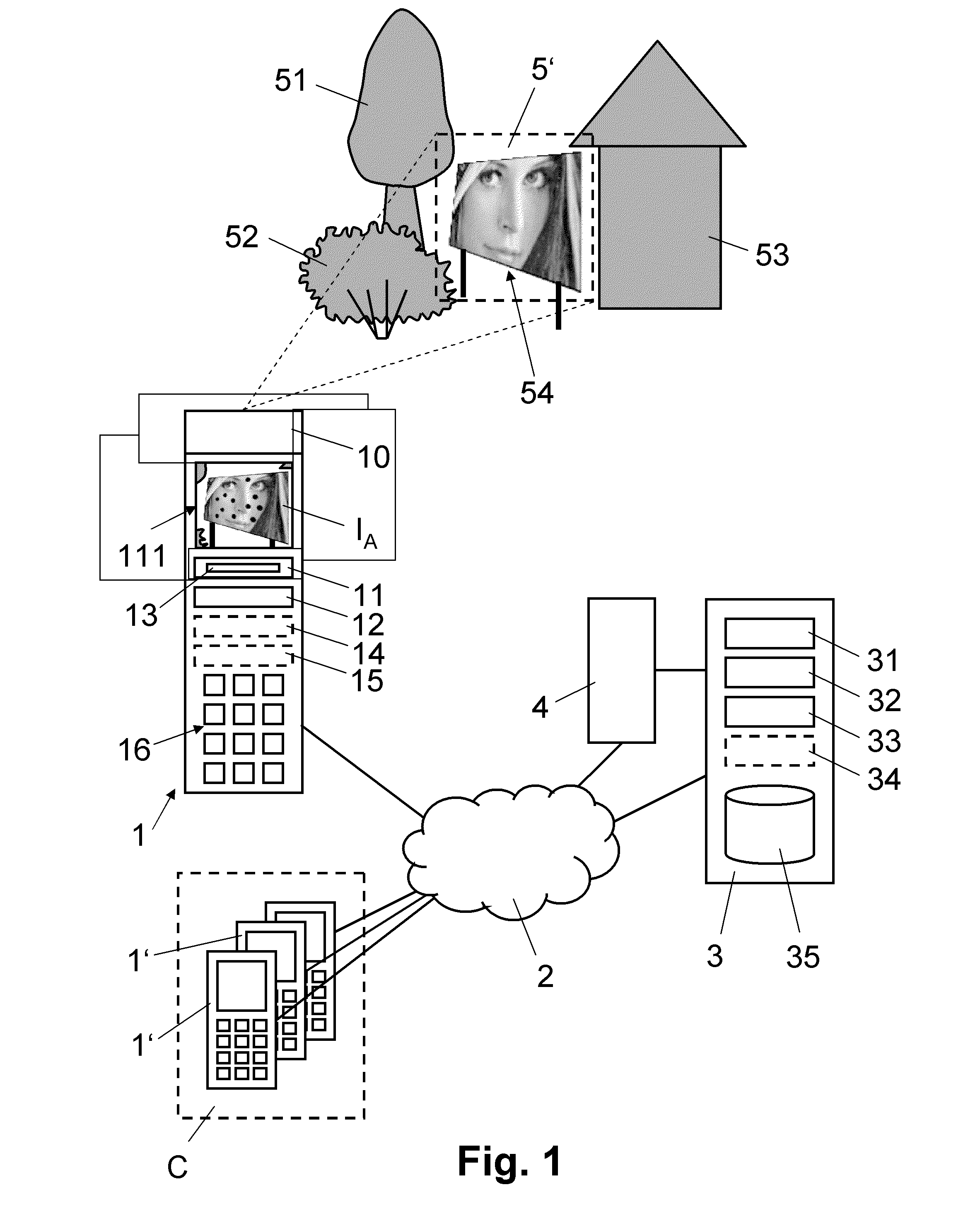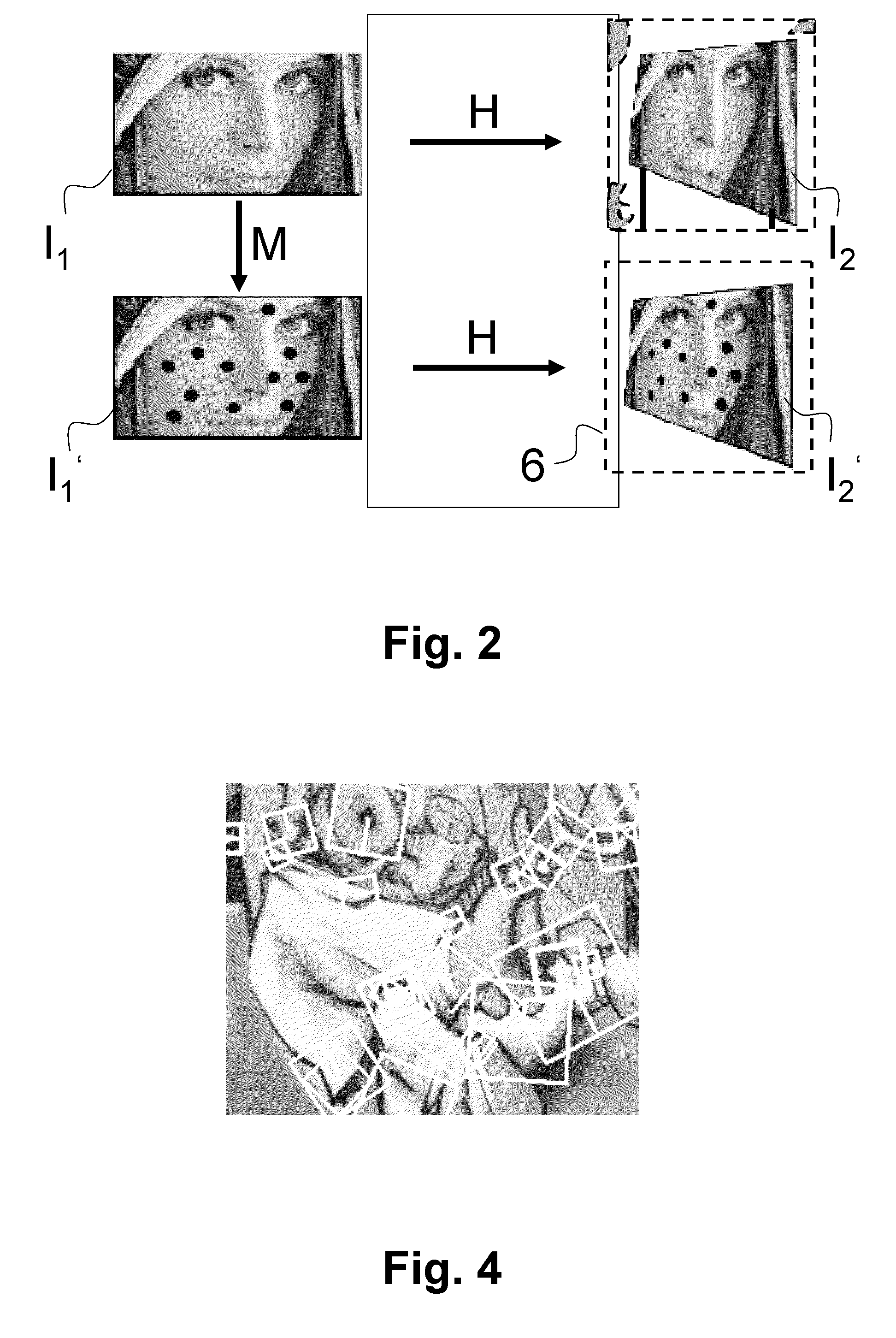Method and system for image-based information retrieval
a technology of information retrieval and image, applied in the field of methods and systems for information retrieval based on images, can solve the problem that known systems do not provide image-related information, and achieve the effects of reducing search space, increasing user privacy, and reducing search tim
- Summary
- Abstract
- Description
- Claims
- Application Information
AI Technical Summary
Benefits of technology
Problems solved by technology
Method used
Image
Examples
Embodiment Construction
[0022]As illustrated in FIG. 1, the system for information retrieval based on images comprises at least one communication terminal 1 and a digital (electronic) camera 10 associated with the communication terminal 1, a remote computer-based recognition server 3, the communication terminal 1 being connectable to the recognition server 3 via a telecommunication network 2.
[0023]The telecommunication network 2 includes fixed networks and / or wireless networks. For example, the telecommunication network 2 includes a local area network (LAN), an integrated services digital network (ISDN), the Internet, a global system for mobile communication (GSM), a universal mobile telephone system (UMTS) or another mobile radio telephone system, and / or a wireless local area network (WLAN).
[0024]The communication terminal 1 is an electronic device, for example a mobile communication terminal such as a mobile radio telephone, a PDA (Personal Digital Assistant), or a laptop or palmtop computer. The communi...
PUM
 Login to View More
Login to View More Abstract
Description
Claims
Application Information
 Login to View More
Login to View More - R&D
- Intellectual Property
- Life Sciences
- Materials
- Tech Scout
- Unparalleled Data Quality
- Higher Quality Content
- 60% Fewer Hallucinations
Browse by: Latest US Patents, China's latest patents, Technical Efficacy Thesaurus, Application Domain, Technology Topic, Popular Technical Reports.
© 2025 PatSnap. All rights reserved.Legal|Privacy policy|Modern Slavery Act Transparency Statement|Sitemap|About US| Contact US: help@patsnap.com



